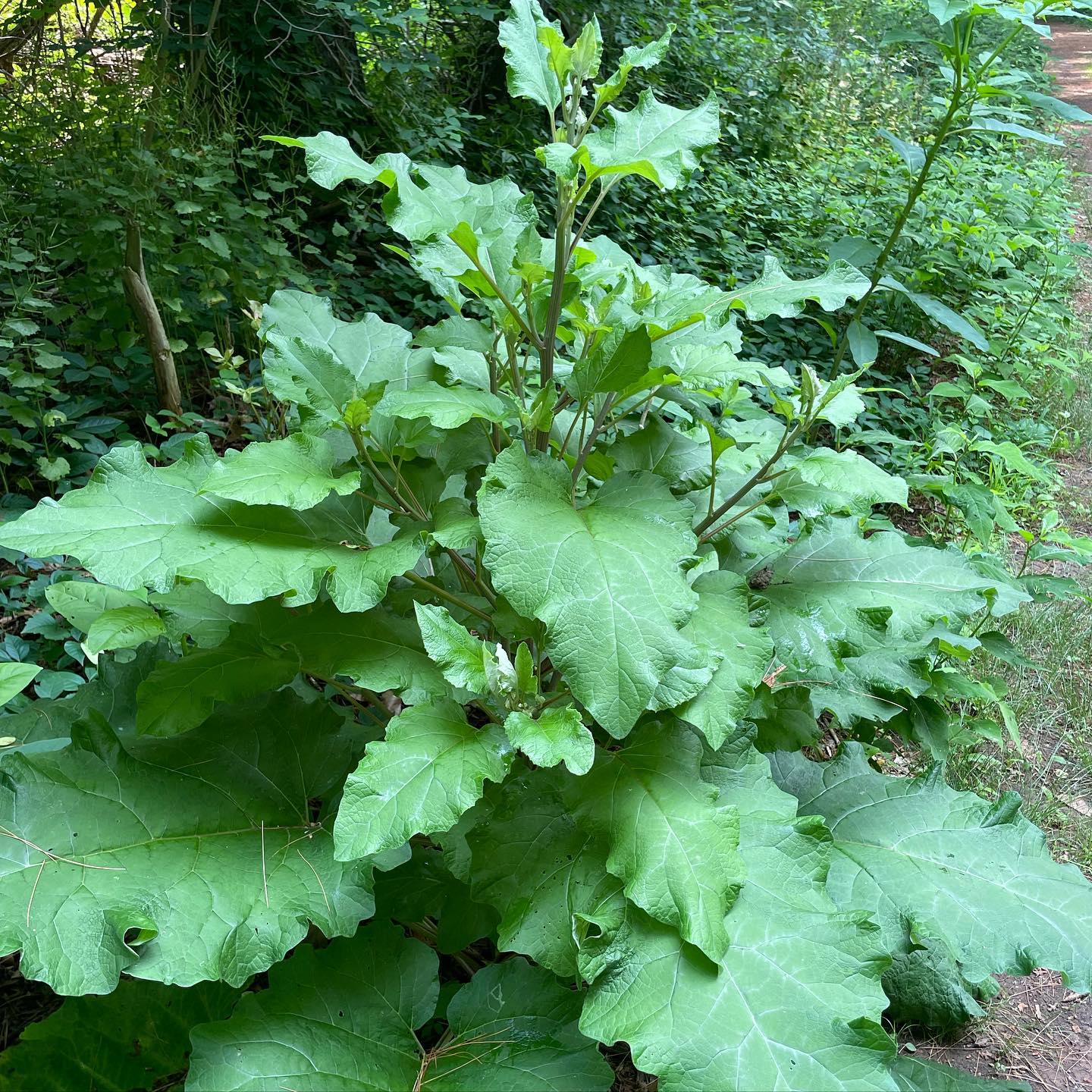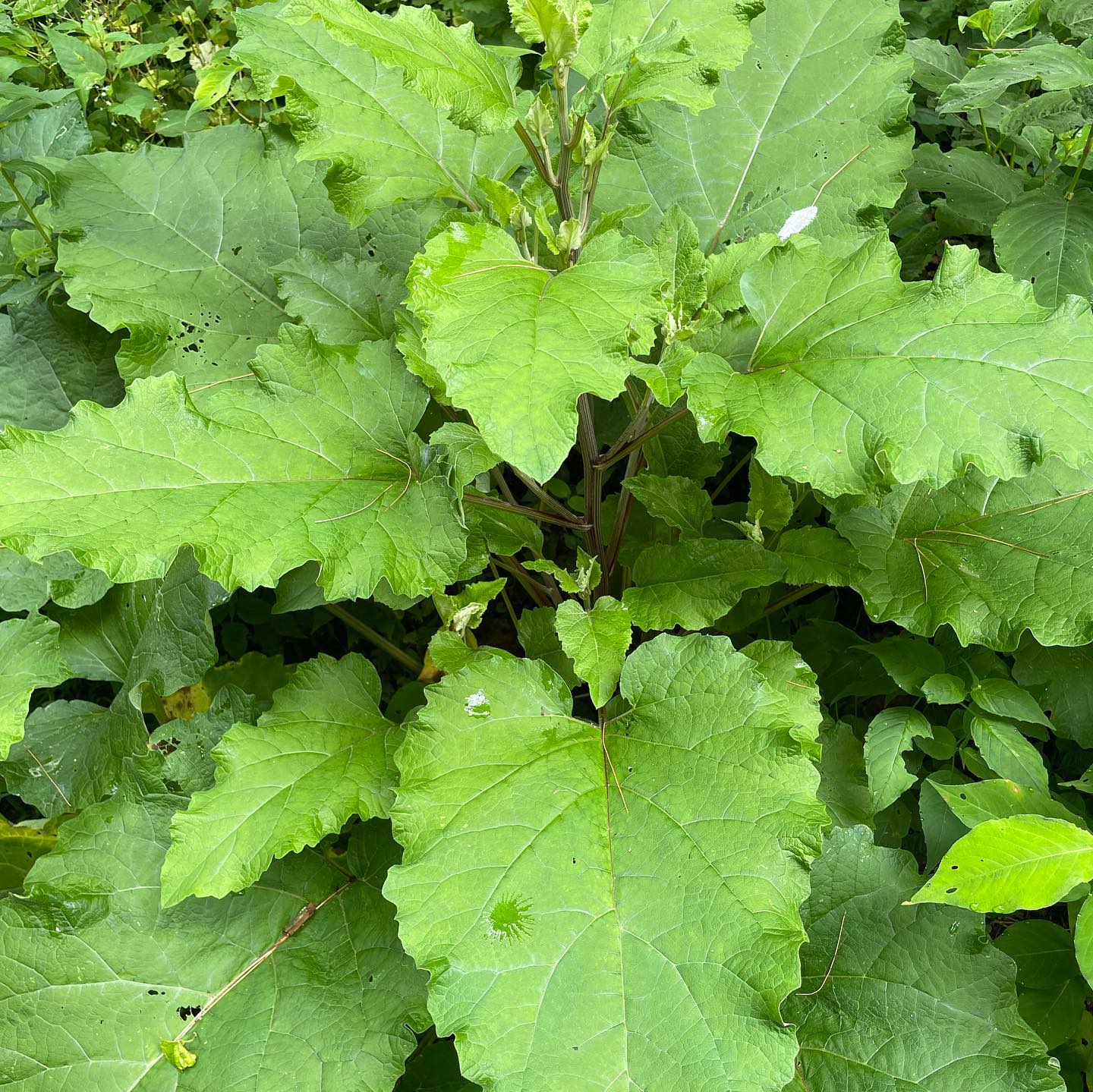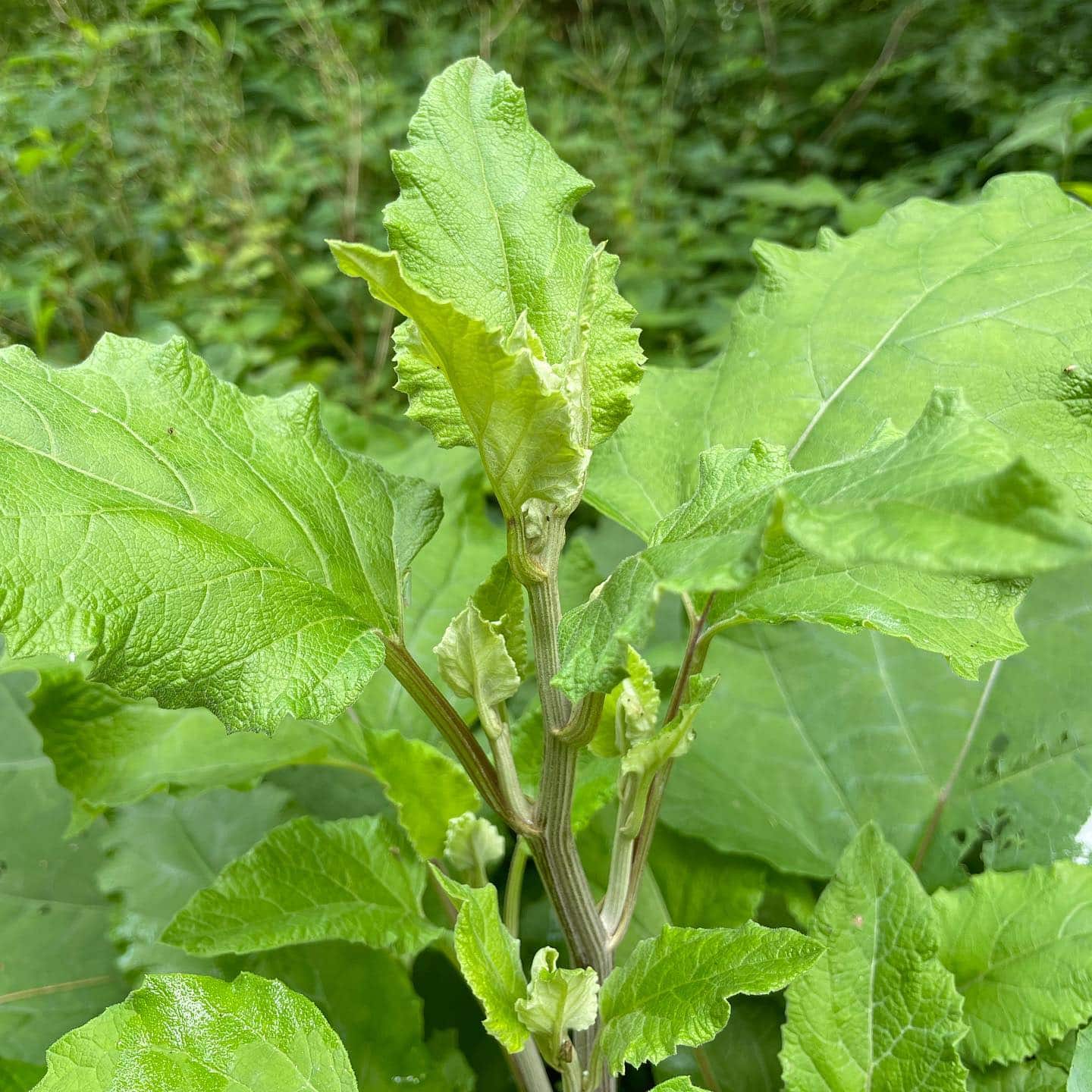Page Created by Connecticut Foraging Club
Upcoming Events | Meet the Instructors | Plant Archive | Mushroom Archive
----------------
Upcoming Events | Meet the Instructors | Plant Archive | Mushroom Archive
----------------
Greater burdock (Arctium lappa) is an invasive plant with edible and medicinal uses. Burdock is often found in disturbed soil and along edges of fields and walking paths.

Burdock is a biennial, producing a basal rosette its first year and sending up a flower stalk its second year. Burdock can be identified by its fuzzy leaves with a ruffled appearance and white undersides.
Burdock is one of the first spring greens to appear. The young leaves are edible, though may be bitter.

Burdock roots can be collected June-July from the first-year plants. Domesticated burdock roots are called Gobo in Asia. They are traditionally peeled, sliced, and added to stir fries. Burdock root is also used medicinally to treat skin diseases, remove toxins from the blood, and aid digestion. The chopped roots can be steeped in alcohol or vinegar for one month to extract the medicinal compounds.

During its second year, the burdock plant sends up a flower stalk. The stalk can be harvested before the plant flowers. The stalk should be peeled twice. It can then be boiled to reveal an artichoke-tasting vegetable.

Two species of burdock grow in New England. Lesser burdock (Arctium minus) grows up to 6 feet tall and produces hollow leaf stalks. Greater burdock (Arctium lappa) grows up to 9 feet tall and produces solid leaf stalks. Both species can be used interchangeably.
--
Written by Amy Demers, founder of the Connecticut Foraging Club. To learn more about foraging in Connecticut, check out our upcoming classes.






